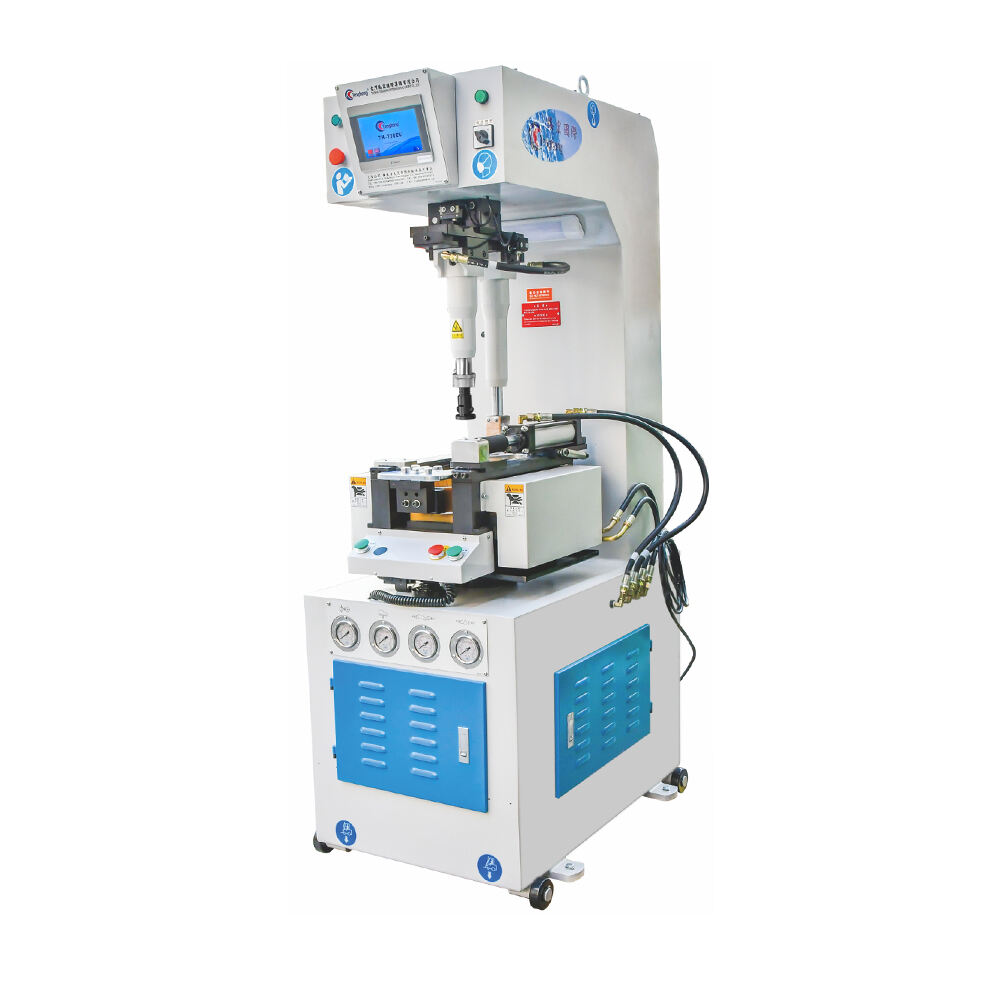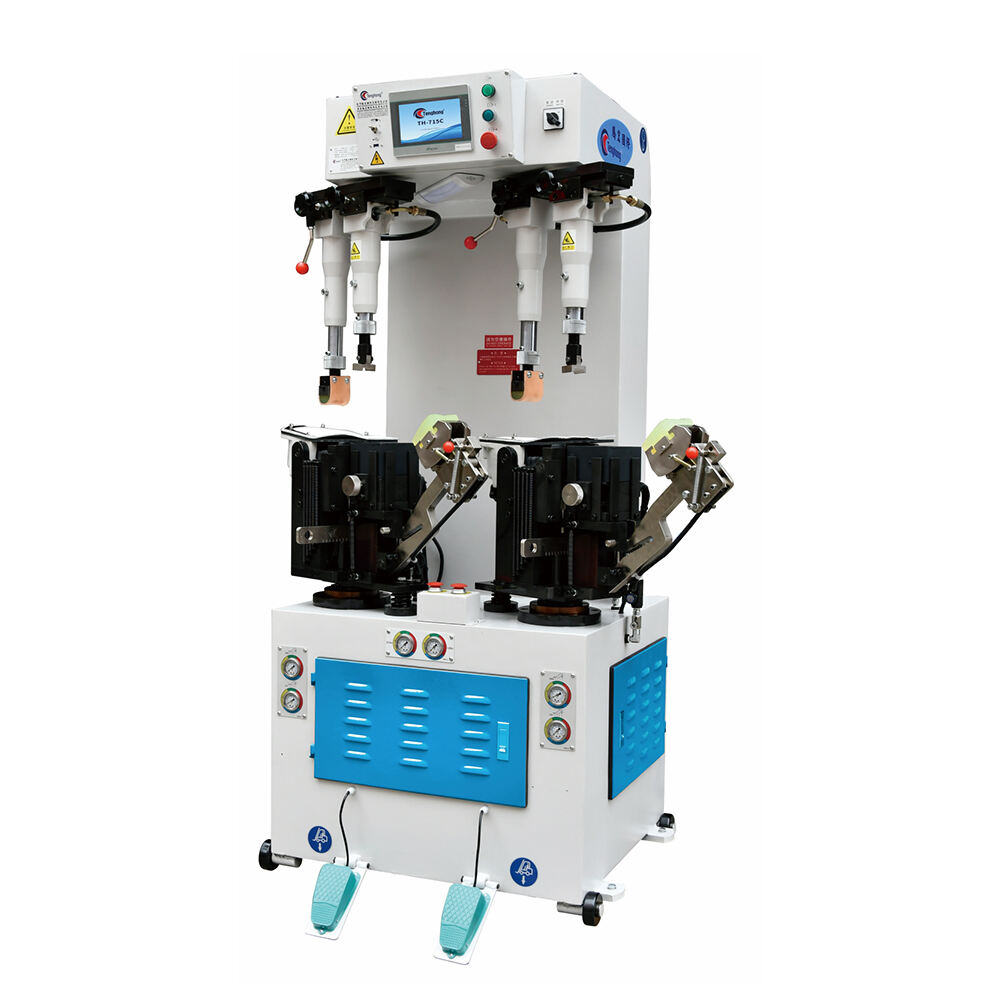Durable Sole Attaching Solutions for Long-Lasting Shoe Quality
The Role of Sole Attaching in Shoe Quality Solutions
Why Sole Attachment Impacts Longevity
How well the sole sticks to the rest of the shoe really affects how long the shoes will last overall. When there's good bonding between the bottom and the upper part, the shoes tend to hold up better against normal daily use without falling apart at the seams. On the flip side, if the sole isn't properly attached, damage occurs much faster and people end up throwing away perfectly good shoes way too soon. Many people who design shoes know this firsthand. They recommend investing in better quality materials along with stronger stitching methods during manufacturing. Some studies suggest that shoes made with these improved attachment techniques actually stay wearable about 30 percent longer compared to cheaper alternatives. That makes sense when thinking about all the money spent on new pairs every few months versus spending a bit more upfront for something that lasts longer.
Connection Between Machinery and Footwear Durability
The latest machines have completely changed how we attach soles to shoes, making them much more durable overall. Today's manufacturing equipment combines exact stitching techniques with stronger adhesives that create bonds that really hold up over time. Take Nike for example they rolled out new automated systems last year and saw their shoes last about 25% longer before showing wear. Industry data backs this up too, with several recent studies pointing to better quality control when using modern tech. Shoe companies now make products that stand the test of time rather than just meeting basic standards. Investing in these machines isn't just smart business it's actually transformed what consumers expect from their footwear today.
Hydraulic Pressure Systems for Firm Bonds
Hydraulic pressure systems are really important in making shoes where they help create strong bonds between soles and uppers. Without this technology, most shoes would just fall apart after a few wears. The way these systems work is pretty straightforward actually - they spread pressure evenly across all materials during the bonding process, which means we get those solid attachments everyone wants from their footwear. Most manufacturers equip these machines with things like adjustable pressure gauges so workers can fine tune exactly how much force gets applied depending on what kind of material they're working with. Studies looking at shoe factories around the world keep showing that when companies invest in good hydraulic systems, their products tend to last longer and customers report fewer problems with soles coming loose. That's why almost every major shoe brand relies heavily on this technology nowadays.
Adjustable Settings for Diverse Shoe Types
Today's sole attachment machines need adjustable settings because shoes come in all shapes and sizes, from running shoes to dress shoes that require special treatment. The ability to adjust these machines makes a big difference for manufacturers who want to get the right fit and lasting quality no matter what kind of shoe they're making. Big name shoe companies invest heavily in this adaptability so they can handle everything from regular stock items to those limited edition designs that fly off shelves. People working in the industry know customization isn't just nice to have anymore it actually improves how happy customers are with their purchases since properly fitted shoes last longer and feel better on feet throughout the day.
Automated vs Manual Operation Comparisons
Footwear manufacturers are increasingly turning to automation for sole attachment work because it just makes business sense. Machines can crank out shoes at a much faster pace than people ever could, plus they make fewer mistakes overall according to industry reports from last year. Manual assembly still needs workers with special skills, but when things go wrong during hand assembly, the whole batch might end up defective. Automation changes all that by producing consistent results every single time. Many factories have already started this transition, and what we're seeing now is basically the next step in how shoes get made. Better precision means stronger soles that last longer, while being able to scale production quickly helps meet sudden spikes in demand without compromising on quality standards.
Top Heavy-Duty Sole Attaching Machines for Manufacturers
TH-710E Double Station Machine (16-Side Pressure)
In the realm of footwear production, the TH-710E Double Station Machine has carved out quite a reputation thanks to how well it attaches soles to shoes. What makes this machine special? Well, it packs some serious hydraulic punch that creates really strong bonds between the sole material and whatever upper fabric they're working with. The real game changer though is those two stations side by side. Manufacturers can literally work twice as fast since they don't have to wait for one station to finish before starting another. Factory workers we've talked to mention how much faster their lines run when using these machines, plus nobody complains about the control panel being complicated to operate. Compared to similar equipment on the market right now, most plant managers will tell you that nothing matches the TH-710E when it comes to getting things done quickly while still maintaining quality standards over long periods of operation.
TH-710EU PLC-Controlled Compact System
What makes the TH-710EU stand out? Its PLC controlled compact design that was built with automation in mind while still delivering spot on results when attaching soles. When connected to proper software systems, operators get much better control over every step of the process. This leads to fewer mistakes happening during production runs and saves time overall. For factories dealing with tight floor plans, this machine offers real value. They can produce shoes at impressive speeds without having to sacrifice quality standards. Looking at actual factory implementations, many businesses have seen their production cycles shorten and labor expenses drop once they started using the TH-710EU regularly. No wonder why footwear manufacturers across the industry keep turning back to this particular model when upgrading their equipment.
TH-715A Hydraulic Wall-Type Attacher
Built to last, the TH-715A stands up well in tough manufacturing conditions because of its robust hydraulic setup. The machine handles serious workloads day after day without losing stability or compromising on quality output. Factory workers and plant managers regularly mention how dependable this equipment proves over time, pointing out fewer breakdowns and less frequent repairs compared to other models they've used. Many automotive parts makers and metal fabrication shops have adopted the TH-715A precisely because their operations demand continuous running with little interruption. Looking at maintenance requirements down the road, most facilities find they spend less time and money keeping this machine running smoothly. For manufacturers trying to balance budget constraints with production demands, the TH-715A offers good value that pays off month after month in real world applications.
Optimizing Shoe Production with Advanced Stitching Technology
Integration with Shoe Sewing Machine Lines
Bringing together advanced stitching tech with current shoe sewing machines really makes a difference when it comes to getting more done in the footwear manufacturing sector. When companies line up their stitching patterns with how they attach soles to shoes, whole assembly process gets smoother and there are fewer holdups on the production floor. Take some factories we've seen recently - they combined these different systems and saw real gains in output while spending less time waiting around for equipment fixes. The upside goes beyond just faster production too. Shoes coming off the line tend to look better overall and maintain consistent quality from batch to batch. What happens here matters a lot for brands trying to keep their name respected in the market place. Customers notice when shoes vary too much in quality, so having uniform products helps maintain trust and keeps people coming back for more.
Precision in Shoe Stitching Machine Operations
Getting the stitching right in shoes matters a lot when it comes to making good quality footwear. When manufacturers get their stitching just so, each pair ends up meeting all the necessary standards, something that really affects how long the shoes last and how well they hold up over time. New tech developments have made stitching machines much more accurate lately, cutting down on mistakes and wasting less material in the process. Industry insiders consistently point out that getting the stitching right makes all the difference in keeping customers happy with their purchases. Beyond looking better, proper stitching actually strengthens the structure of the shoes themselves, so people end up with footwear that feels better on their feet and stands up to regular wear and tear without falling apart.
Maintenance Practices for Consistent Shoe Quality
Daily Care for Sole Attaching Machines
Keeping sole attaching machines running at their best means sticking to some basic daily maintenance habits. The first thing on most technicians' lists is cleaning all those nooks and crannies where dust and old adhesive tend to build up over time. A quick wipe down after each shift goes a long way toward preventing these deposits from gumming up the works. Don't forget to apply proper lubrication to all moving components every day as well. Most shops swear by silicone-based lubes for this kind of machinery since they last longer without attracting dirt. Checking everything else regularly makes sense too. Look out for loose bolts that might come undone during operation or parts showing signs of wear that could cause problems later. Machines that get consistent TLC generally break down less often and produce better quality shoes overall. Factory floor managers know this firsthand - when machines are maintained properly, they last years longer than neglected ones and consistently churn out footwear customers actually want to buy.
Troubleshooting Common Equipment Issues
Sole attaching machines will inevitably run into trouble from time to time, and when they do, quick action is needed before production grinds to a halt. Common problems include parts getting out of alignment, glue lines getting clogged, and those annoying stitching irregularities on shoes. Fixing these usually means adjusting components back in place, unclogging those sticky adhesive pathways, and sometimes doing a full recalibration of the whole system. According to recent data from footwear manufacturers, even short periods of machine downtime can slash production efficiency by anywhere between 20% and 30%. That's why smart shops keep maintenance schedules locked in stone and stockpile spare parts like crazy. The folks who know this stuff inside out always stress regular checkups and having replacements ready to go. When facilities stick to this approach, they not only cut down on unexpected stoppages but also keep their production moving smoothly day after day, which ultimately means more pairs of quality shoes rolling off the line without a hitch.




